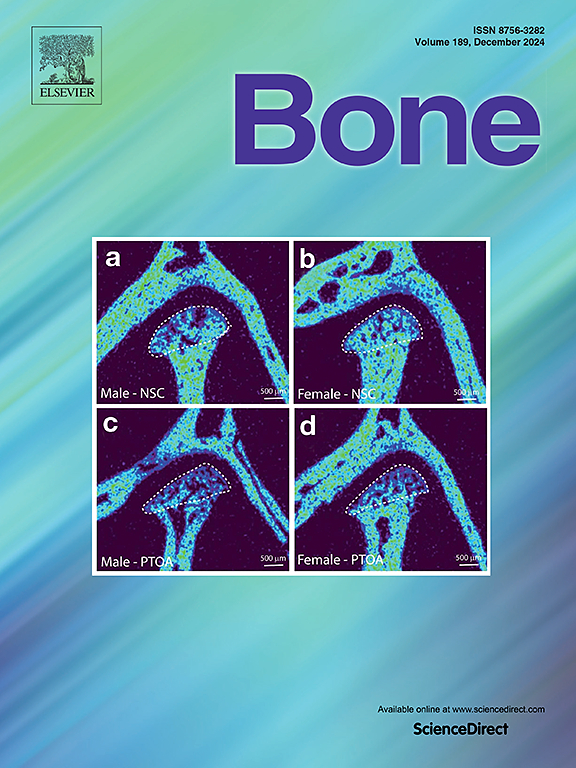A partnership between the Australian and New Zealand Bone and Mineral Society (ANZBMS) and Bone: Highlights from the 2024 annual scientific meeting
IF 3.6
2区 医学
Q2 ENDOCRINOLOGY & METABOLISM
引用次数: 0
Abstract
The Australian and New Zealand Bone and Mineral Society (ANZBMS) is a leading bone research society in the Asia-Pacific region and has been recognised for outstanding contributions to clinical and biomedical musculoskeletal research. To showcase the research being undertaken by ANZBMS members, a joint initiative between ANZBMS and the journal Bone via a special issue was developed to further enhance international collaboration. This editorial serves as an introduction to this initiative, where three past ANZBMS presidents have shared their clinical and fundamental highlights from the 2024 ANZBMS annual scientific meeting in Adelaide, held in conjunction with the Endocrine Society of Australia and the Society for Reproductive Biology. Highlights include the importance of ethnicity when considering fracture risk, influence of paternal age on bone health in their offspring, novel combinations of bone active medications, bone biology and cancer, effect of glucocorticoids on the formation of neurogenic heterotopic ossification, parathyroid hormone signalling in hematopoietic and osteogenic lineages in the bone microenvironment and the regulation of osteoclast formation. Through a highly regarded platform such as Bone, and in line with the wider aims of the ANZBMS, this collaboration provides an update on the work being conducted by members of the society.
澳大利亚和新西兰骨骼和矿物协会(ANZBMS)与骨骼之间的合作伙伴关系:2024年年度科学会议的亮点。
澳大利亚和新西兰骨骼和矿物协会(ANZBMS)是亚太地区领先的骨骼研究协会,因其在临床和生物医学肌肉骨骼研究方面的杰出贡献而得到认可。为了展示澳大利亚医学协会成员正在进行的研究,澳大利亚医学协会和《骨》杂志通过一期特刊联合发起了一项倡议,以进一步加强国际合作。这篇社论是对这一倡议的介绍,其中三位前任ANZBMS主席分享了他们在阿德莱德举行的2024年ANZBMS年度科学会议上的临床和基础亮点,该会议与澳大利亚内分泌学会和生殖生物学学会联合举行。重点包括种族在考虑骨折风险时的重要性,父亲年龄对后代骨骼健康的影响,骨活性药物的新组合,骨生物学和癌症,糖皮质激素对神经源性异位骨化形成的影响,骨微环境中造血和成骨谱系中的甲状旁腺激素信号传导以及破骨细胞形成的调节。通过Bone这样一个备受推崇的平台,并与ANZBMS更广泛的目标保持一致,这次合作提供了社会成员正在进行的工作的最新情况。
本文章由计算机程序翻译,如有差异,请以英文原文为准。
求助全文
约1分钟内获得全文
求助全文
来源期刊

Bone
医学-内分泌学与代谢
CiteScore
8.90
自引率
4.90%
发文量
264
审稿时长
30 days
期刊介绍:
BONE is an interdisciplinary forum for the rapid publication of original articles and reviews on basic, translational, and clinical aspects of bone and mineral metabolism. The Journal also encourages submissions related to interactions of bone with other organ systems, including cartilage, endocrine, muscle, fat, neural, vascular, gastrointestinal, hematopoietic, and immune systems. Particular attention is placed on the application of experimental studies to clinical practice.
 求助内容:
求助内容: 应助结果提醒方式:
应助结果提醒方式:


